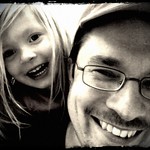I was one of several bloggers and new media "experts" who met with a group of Yemeni journalists, bloggers, and activists in downtown St. Louis. Jim Hoft the Gateway Pundit, Ben Evans of the St. Louis Tea Party, and Brian Hook of the Missouri Journal were also there. The meeting was sponsored by the World Affairs Council and focused on the use of social media and blogging. With Yemen going through a great deal of turmoil, current events provided the context for our discussion about new media tools like facebook, twitter, Blogger/Blogspot, flickr, and YouTube.
News from Yemen was covered in the Financial Times today:
[Yemen's President Ali Abdullah] Saleh has survived at the helm of the Arab world’s most impoverished country for more than 30 years. Since an uprising erupted in Yemen in February as part of the wave of revolts sweeping the Arab world, he has repeatedly expressed support for a transfer of power proposed by Yemen’s Gulf neighbours while managing to scuttle the initiative at every turn.During our discussion with the Yemenis today, one of them remarked that they have a saying: "whatever the president says, he does the opposite." That certainly seems to be the case with respect to the democratic reforms that activists and neighboring countries have advocated for.
Those activists have paid a heavy price for their protests. As this thirty second video illustrates, they sometimes come under automatic weapon fire (background story in Arabic). As I reported back in March, the Yemeni government has used gas on massed protesters.
The use of poison gas came up in our discussion today. I mentioned my belief that Iran was the source of a nerve agent used in Sana'a in March; however, the Yemenis rejected that idea. They pointed out that weapons including spent gas canisters were stamped "made in the USA". Truth is always the first casualty of war.
My original analysis was based on what I had seen on twitter and Internet news sources. At the time of the attack, someone tweeted that "one of the bottles of gases used in the attack on Tagheer square in #Sanaa is CN gas." Australia's Sky News reported the use of nerve gas and a Big Peace article reported on the symptoms of an alleged Iranian tear gas:
The Islamic regime in IRAN is using a new “tear gas” that renders those exposed into a state of semi paralysis and violent sickness. We want to reach out to chemical engineers of the world to help us identify the gas and how to defuse it?
Symptoms include:The Wikipedia entry for CN gas notes:
- Severe nausea and vomiting (in some cases blood),
- Semi paralysis,
- Blurry vision.
...this compound irritates the mucous membranes (oral, nasal, conjunctival and tracheobronchial). Sometimes it can give rise to more generalized reactions such as syncope, temporary loss of balance and orientation. More rarely, cutaneous irritating outbreaks have been observed and allergic contact permanent dermatitis.
At high concentrations CN has caused corneal epithelial damage and chemosis. It has also accounted for at least five deaths, which have resulted from pulmonary injury and/or asphyxia."So there you have it: nausea, semi paralysis (syncope), and eye damage from CN gas quite possibly sold to the Yemeni dictator by the the United States. A safer tear gas (CS gas) has been available since at least World War II.
There's obviously an imbalance of power between the protesters and government forces, yet in a carefully worded condemnation last week, the Obama administration resorted to equivocation when it "called upon all parties to exercise restraint." The Yemenis that we met with pointed out the lopsided nature of this call for restraint since they had exercised restraint themselves. Many Yemenis have guns; however, they did not bring them to the protests.
The unrest back home obviously weighs on our visitors. One of them said that they will be called US agents when they return. They worry about their country and their fellow citizens as well fearing that assassinations and political killings will continue for sometime.
We asked them if there were national leaders for their revolution. They described a movement of many different groups that occupy the complete spectrum of political thought in Yemen, but share the same overpowering vision of riding the country of its dictator. Because of that, no one leader has emerged.
Much more from Jim Hoft at the first link below.












No comments:
Post a Comment